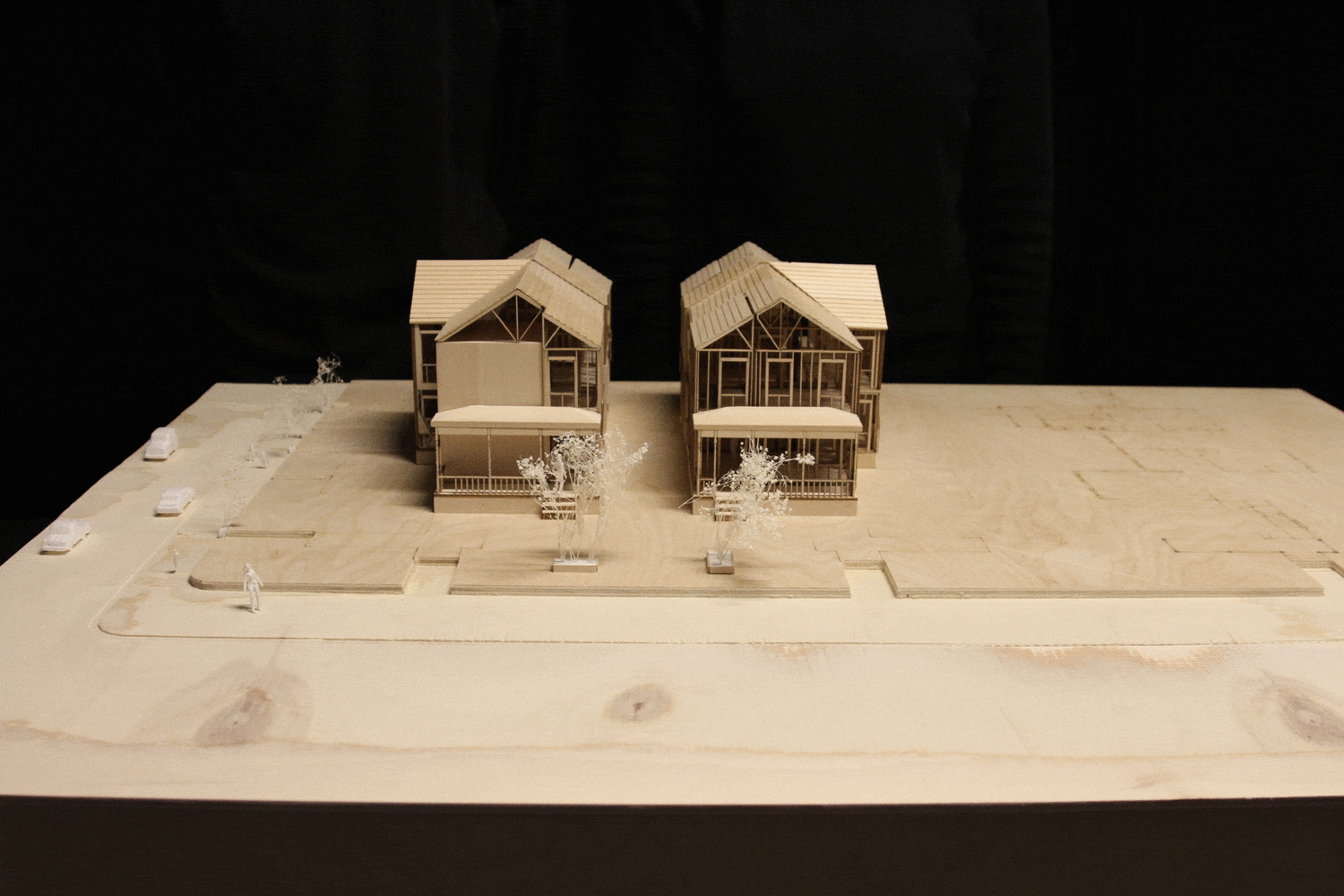An analysis of a typical New Haven two-family house and Luigi Moretti’s Il Girasole shows units across a mirrored dividing line. In the case of the New Haven house, this line is a horizontal, hard boundary. In the case of Il Girasole, this line is vertical and permeable. There is little to no shared space or opportunity for interaction between the two families living in the New Haven house, while in Il Girasole, the central circulation void and the internal courtyards are shared spaces. Ownership of these spaces is ambiguous. Il Girasole’s contains a complex three-dimensional space not found in the New Haven house. There are moments when it is unclear what is inside, what is outside, what is part of an individual unit and what is not.
In this model, my team aimed to transpose the ambiguity of ownership and boundary seen in Il Girasole into the New Haven house, seeking to create the same pattern of visually and physically shared corridors and yards. The turning out of the New Haven house achieves inter-unit relationships and elicits instances of rotation and projection that support our overall goal of blurring the boundaries of separation and sidedness. We are freeing the New Haven house from its wrapper and divisions and creating a catalyst for the transformation of the neighborhood.
In collaboration with Camille Chabrol, Page Comeaux, Ruchi Dattani, Michael Glassman, Rachel LeFevre, Matthew Liu, Thomas Mahon, Layla Ni, and Kay Yang.



